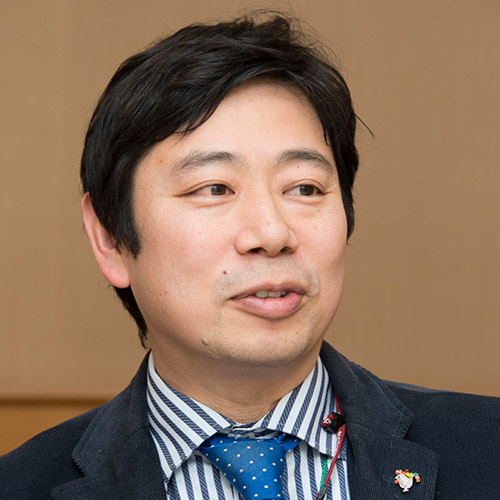Greetings from the Director

Director / AMAO,Yutaka
Almost all life on Earth depends on sunlight to survive. Photosynthesis uses the energy of sunlight falling on the earth to synthesize oxygen from the abundance of water and carbohydrates to sustain itself from carbon dioxide in the atmosphere. The oxygen is taken in through respiration, the carbohydrates are burned to produce the energy necessary for life, and the organic matter is converted back into water and carbon dioxide. In other words, life on Earth works in tandem with photosynthesis to create an ideal, cyclical, and sustainable world.
On the other hand, to shift from a society dependent on fossil fuels represented by petroleum energy to a carbon-neutral society through the creation of new energy sources, it is not enough to simply curb carbon dioxide emissions. It is also necessary to develop recycling technologies that efficiently capture carbon dioxide and actively convert it into valuable resources, such as the bold CO2 reduction targets in the Paris Agreement adopted at the 21st Conference of the Parties (COP21) to the United Nations Framework Convention on Climate Change (UNFCCC) in December 2015 and the Japanese government's October 2020 announcement to reduce greenhouse gas emissions to zero by 2050. The Japanese government's declaration of carbon neutrality, which aims to reduce overall greenhouse gas emissions to zero by 2050, was adopted by the Conference of the Parties (COP21) to the 21st Climate Change Framework Convention in October 2020. Achieving artificial photosynthesis, which uses solar energy and catalysts to produce valuable substances while virtually recycling carbon dioxide, will require novel technologies that learn from, mimic, and transcend natural photosynthesis.
The Artificial Photosynthesis Research Center of Osaka Metropolitan University will promote application-oriented research for the realization of artificial photosynthesis in collaboration with industry, government, and academia, based on the results of basic research on photosynthesis and artificial photosynthesis that has been vigorously pursued since the center opened in 2013. Concrete examples of practical applications of artificial photosynthesis, which had been vague, are gradually becoming visible. Research on obtaining hydrogen energy from materials made from carbon dioxide by artificial photosynthesis and connecting this to the supply of electricity, and research on the use and recycling of carbon dioxide to make valuable materials using solar energy, have made dramatic progress. Eventually, we aim to bring about a society in which these technologies are used in a very ordinary way. In order to realize such a society, the Center will continue its research and development to further deepen artificial photosynthesis technology.